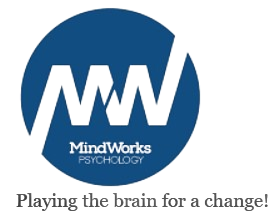A Quick Way To Explain The Whole Brain
Many people speak about the brain as having parts. In fact, it has specific hemispheres and key areas—BOTTOM, MIDDLE, and TOP—that can be targeted to harness neuroplasticity. As a therapist, you want to influence a client’s BOTTOM brain. That’s how you create lasting change.
Most psychotherapists use talk therapy, which works with the TOP brain. When you focus on the TOP brain in sessions, your clients will often tell you they understand how or why they need to change. They may make plans and decisions to change, but they won’t change. They think something is wrong with them rather when, in fact, there’s a problem with what the TOP brain has been doing.
The MIDDLE Keeps Clients Stuck
Without interventions that engage and influence the MIDDLE brain, however, transformation won’t happen either. This part of the brain has a unique signature or style of automatic or non-conscious thinking.
If you studied the content of Middle-brain thinking you’d find it is totally irrelevant for creating and commanding useful right-now actions. It is as if the Middle brain doesn’t recognize the present moment, and it focuses only on “what I should or could have done,” “what I hope I can do in the future,” and, of course, “what is wrong with me? Why do I feel and think this way?”
Interesting research has been done on the relationship between the activation of MIDDLE Brain region, the default mode network, and rumination-stuckness problems as seen in heartbreak, PTSD, depression, chronic grief, and guilt.
BOTTOM Brain Inspires Action
The BOTTOM brain, on the other hand, can inspire enthusiasm and actions that cause change. By working with the BOTTOM brain in sessions, you help your clients create fast and lasting transformation.
That’s why it’s so important to understand the areas of the brain and keep them in mind when working with clients. This organ—the human brain—has a TOP, MIDDLE, and BOTTOM; you can “play this organ” more effectively in sessions and teach your clients to do so. And when they walk out the door they’ll have acquired this new Theory of Whole Brain in Mind to guide them. Not only will they come to form a new alliance or relationship with their organ they will develop new understanding of how they can and will change.
Conclusion
If you conceptualize the whole brain as multi-leveled in its capabilities, functions, processing, and responding you have a way of talking to clients about their problems that’s new and science based.
I’m passionate about spreading the good news about the whole brain as an amazing organ and showing psychotherapists the keys to how to use neuroscience to play the brain for change. Doing so is awesome and miraculous and illuminates our brains’ innate ability to change gradually and rapidly. Neuroscience ultimately will guide our best clinical practice as we seek successful outcomes for our clients. Once therapists understand the whole brain and how to promote neural change, they will play this essential organ and consistently get transformational results for clients. When you learn Emotional Pain Intervention (EPI®), you realize how important it is to focus your clinical practices on brain science that promotes transformation.
Do you explain the whole brain in your work to influence change? I’d love to hear about it please leave a comment below.


